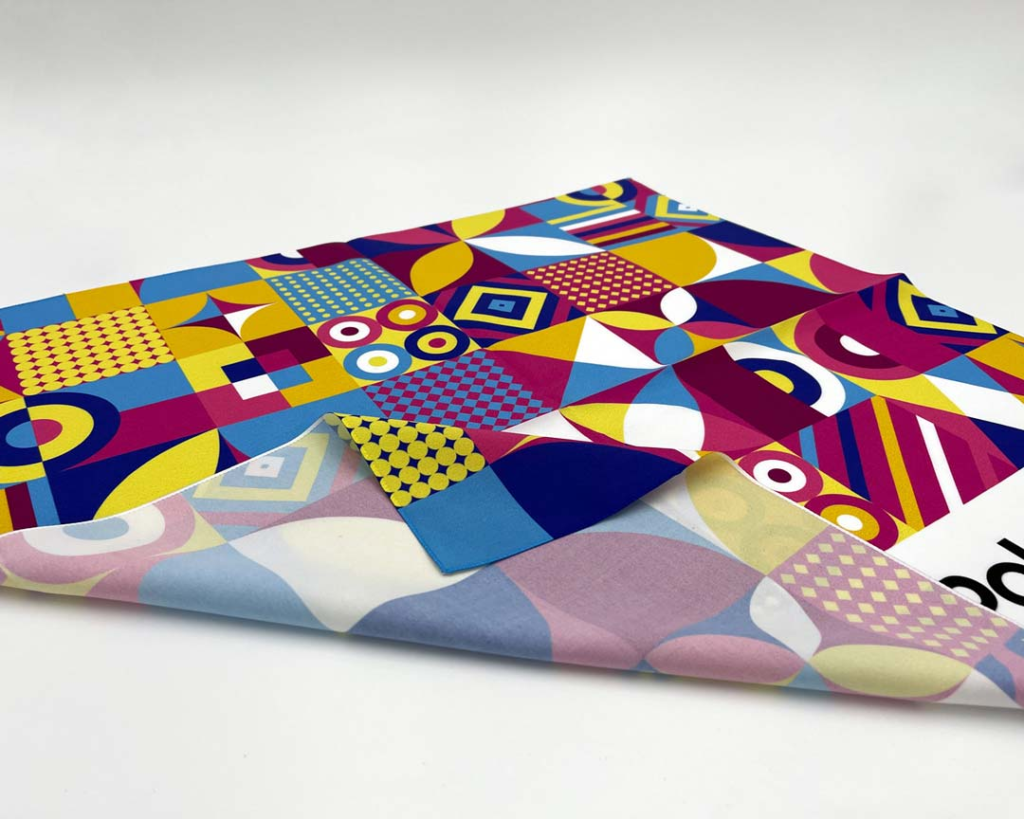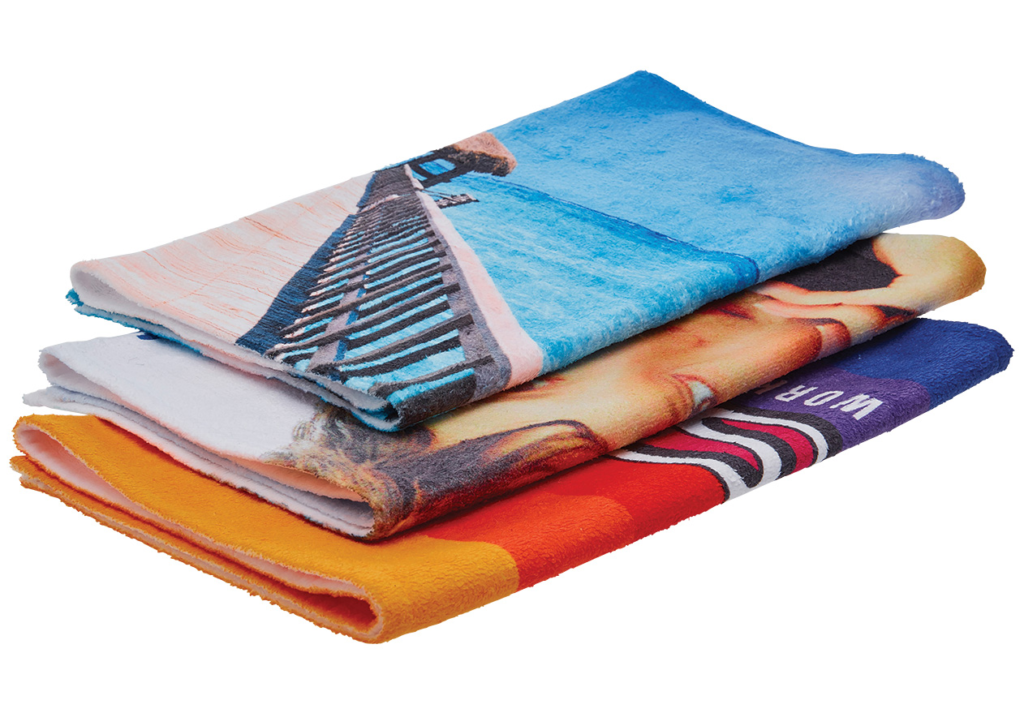
The world’s inclination towards customized goods has given rise to many techniques. These techniques are making it easier for businesses to offer such goods. Whether you need a personalized t-shirt, lanyard, wristbands, bandanas, towels, or anything else, it is a piece of cake these days.
The concept of sublimation printing has taken a toll; many industries now rely on it. It allows them to print custom products. If you are also looking forward to having your products customized via sublimation printing, you must read this guide below.
What is Sublimation Printing?
Sublimation printing is a process that transfers the design to the desired material. It does it with the help of pressure and heat. It converts the dyes from solid to gas without turning them into liquid.
The sublimation process helps customize apparel promotional items or design personalized gifts. This process is versatile and allows quick printing without any hassle.
What is a Sublimation Printer? How Does It Work?

A sublimation printer is a printer that makes use of heat to transfer the ink on materials. It is used for the process of sublimation printing.
These materials consist of ceramics, fabrics, or metals. It comprises a specified process for printing designs on different materials.
Sublimation is a term that refers to the transfer of ink from solid to gas without turning into liquid. A sublimation printer uses specialized ink. This ink sublimes when heating the desired material.
The sublimation printer requires specialized ink and paper to create a design on the material.
The printer is associated with software that helps design the image or design, which is then passed on for printing. This printer uses heat and pressure to ensure a durable design is printed on relevant materials.
How to Print Sublimation Images?

The process of printing sublimation images requires using a sublimation printer, specialized ink, and a specialized sublimation paper, followed by the process provided below:
- The primary step of this process is creating a digital design or any image. This design is made with the help of graphic designing software and is then printed on special paper used for sublimation.
- The design created on the software is now in the second step, printed on the sublimation. The print involved in this process must use sublimation inks.
- The material on which the printing is to be done is subjected to preparation. Ensuring the material is clean and dry before transferring the design is essential.
- The heat press is preheated at a temperature that ranges between 350 Fahrenheit and 400 Fahrenheit based on the material on which the design is printed.
- The material and the paper are then placed in the heat press, where heat and pressure are applied for 30 to 60 seconds.
- When heat and pressure are applied to the material, the design on paper with sublimation ink turns into a gaseous state from a solid state.
- Once the transfer process is completed, the material is removed from the heat press and left to cool down.
Benefits of Sublimation Printing
Sublimation printing is a viral process these days, and as a business that requires text and images printed on its products, you may find it beneficial. Some of the benefits of this process are as follows:
- Sublimation printing ensures created images that are bright and detailed. It helps in designing products with seamless color saturation. It also adds slight shading and makes the design appealing.
- The infused dyes into the material help in creating a durable print. These designs are durable and are resistant to peeling, cracking, and fading.
- It is a printing design process that enables the creation of complex and detailed patterns. Hence, the prints are always very seamless.
- The product’s surface doesn’t have any texture as this process absorbs the dyes in the material, and hence, a finished touch is created.
- Sublimation printing is a versatile process and can be used for multiple materials. These may range between polyester, glass, plastic, and metals.
- The setup cost of sublimation printing is less; even if the orders are in minimal quantity, they are catered.
- The traditional printing methods are harmful to the environment. However, sublimation printing produces no waste, and the dyes are free from toxic chemicals, which creates an environment-friendly option.
- This process takes very little time, and hence, customized designs can be made with a quick turnaround time.
Downsides of Sublimation Printing
Along with the pros, sublimation printing has some downsides, which must be considered when choosing this technique. These downsides are discussed below:
- Sublimation Printing works perfectly when using synthetic material and polyester. Regarding materials like natural fibers and cotton, there may be better results than this method.
- Some materials are also sensitive to heat, and this process uses a lot of heat. Hence, materials that are sensitive to heat may not find this process.
- Products that have darker backgrounds are not suitable for sublimation printing. Backgrounds that consist of white and other lighter colors are best suited.
- A hefty investment must be made when opting for sublimation printing. The cost of sublimation printers and heat presses is high.
- Sublimation printing may be challenging for beginners. It takes a lot of time to learn the pressure and temperature settings, which are crucial for accurate printing.
- As far as the sublimation process is concerned, it is environmentally friendly. However, certain materials like polyester and synthetic materials may harm the environment.
Applications of Sublimation Printing
Sublimation printing is a versatile technique and hence caters to multiple industries. The most common applications of this process are discussed below:
Clothing and Apparel
Sublimation is commonly used in the clothing and apparel industry. It helps design custom bandanas, hoodies, t-shirts, and other clothing products. It helps in infusing designs in polyester very perfectly.
Sports Goods
Sports goods like custom hats, caps, shorts, team jerseys, and socks are also designed using sublimation printing. The process is viable in this industry due to its durability and resistance to wear and tear.
Promotional Products
Multiple organizations create promotional products consisting of mousepads, keychains, mugs, and bags with business logos. Apart from this, custom lanyards are also designed for the employees.
Such promotional products are designed using the process of sublimation printing. The process helps to offer businesses to have their logos printed on these products.
Personalized Products
Personalized items like mugs, phone cases, coasters, and pillows are also created with customized designs. These are perfect presents customized with images, messages, and names. The process of sublimation is used for such customization.

Banners and Signage
Sublimation helps design high-quality banners and signage. These are widely used for events, retail setups, and tradeshows. Sublimation printing uses materials like acrylic and aluminum for such displays.
Accessories for Gadgets
Sublimation printing helps add custom designs to phones or other gadget accessories. Such accessories include mobile covers, tablet covers, laptop cases, and much more.
Tips for Successful Sublimation Printing
Sublimation printing is a popular method for customized design and printing for multiple industries. However, to attain success in sublimation printing, some of the essential tips you must follow are suggested below:
- Material selection for sublimation printing is a crucial aspect. For fabrics, you must choose materials ideal for sublimation printing, like polyester. However, some plastics, metals, and ceramics are also suitable.
- Invest in sublimation paper and ink, which is of high quality. Low-quality inks and papers give consistent results and clear prints.
- Keep an eye on pressure and temperature to ensure you achieve suitable calibration.
- It is essential that the fabric or any other material you use for sublimation printing is moisture-free.
- Use heat-resistant tape to keep the paper in place during the printing
- The alignment of the material and design should be appropriate. Keep an eye on this alignment to attain the best prints.
- The heat and pressure settings should be according to the chosen materials. Too much and too little heat and pressure may lead to poor results.
- Wait to remove the printed material immediately after the process. Give it time to cool down; otherwise, the print may smudge.
The place where you are conducting the printing process must be clean. If the equipment has dust or debris, disruptions may occur in the final image.
Conclusion
The sublimation process has helped multiple industries to evolve by offering them a chance to have customized products. If you are also in a business where you need to print customized products for your clients, this process is your go-to option.
At Sino Promotion, you can get hands-on experience with the best results of sublimation printing. We have been catering to various industries in designing and printing promotion products. You can have hands-on custom wristbands, bandanas, lanyards, towels, and more.
The main aim of Sino Promotion is to ensure that the business attains the best products at a reasonable price. We bring your ideas to reality, allowing you to maximize your brand promotion.




